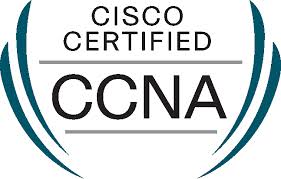CCNA (Cisco Certified Network Associate) is an IT certification from Cisco.
CCNA certification is an associate-level Cisco Career certification.
The Cisco exams have changed several times. In 2013, Cisco announced an update to its certification program that "aligns certification and training curricula with evolving industry job roles." There are now several different types of Cisco-Certified Network Associate, with "CCNA Routing and Switching" being closest to the original CCNA focus; other types of CCNA focus on security, collaboration, datacentres, service providers, video, voice, and wireless.
The content of the exams is proprietary. Cisco and its learning partners offer a variety of different training methods, including books published by Cisco Press, and online and classroom courses available under the title "Interconnecting Cisco Network Devices."
To achieve CCNA Routing and Switching certification, one must earn a passing score on Cisco exam #200-120, or combined passing scores on both the "Interconnecting Cisco Network Devices" ICND1 #100-101 and ICND2 #200-101 exams. Passing the ICND1 grants one the Cisco Certified Entry Networking Technician (CCENT) certification. Passing scores are set by using statistical analysis and are subject to change. At the completion of the exam, candidates receive a score report along with a score breakout by exam section and the passing score for the given exam. Cisco does not publish exam passing scores because exam questions and passing scores are subject to change without notice.
The 200-120 CCNA is the composite exam associated with the Cisco Certified Network Associate Routing & Switching certification. This exam tests a candidate's knowledge and skills required to install, operate, and troubleshoot a small to medium size enterprise branch network. The topics include connecting to a WAN; implementing network security; network types; network media; routing and switching fundamentals; the TCP/IP and OSI models; IP addressing; WAN technologies; operating and configuring IOS devices; extending switched networks with VLANs; determining IP routes; managing IP traffic with access lists; establishing point-to-point connections; and establishing Frame Relay connections.

